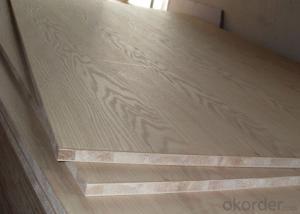Particle Board 101: Understanding the Basics
What is Particle Board?
Particle Board, also known as chipboard or flakeboard, is a type of engineered wood product made from wood chips, sawdust, or wood shavings mixed with a synthetic resin or other type of binder, and then pressed together under heat and pressure to form a solid panel. It’s a versatile and affordable material that has found its way into various applications in the furniture, construction, and cabinetry industries. But what makes it so popular, and how does it differ from other types of wood products? Let’s dive in and find out!
The History of Particle Board
The story of particle board begins in the 1940s when it was first introduced as a way to utilize wood waste and create a more cost-effective alternative to solid wood. Over the years, its production process has evolved, and today, it’s a widely used material in many industries. It’s a testament to human ingenuity and the constant pursuit of innovation in material science.
Advantages of Particle Board
One of the main reasons particle board is so popular is its affordability. It’s a cost-effective option for consumers and manufacturers alike, making it an attractive choice for a wide range of applications. Additionally, it’s relatively easy to work with, allowing for a variety of design possibilities. Its uniformity also makes it ideal for painting or laminating, offering a blank canvas for creativity.
Disadvantages of Particle Board
Despite its many benefits, particle board does have some drawbacks. It’s not as durable as solid wood, and it can be susceptible to damage from moisture, which can lead to swelling and warping over time. It’s also heavier than some other engineered woods, which can make it more challenging to handle and transport.
Comparing Particle Board to Other Wood Products
When it comes to choosing a material for your next project, it’s essential to consider the pros and cons of each option. Particle board is often compared to other wood products such as MDF (Medium Density Fiberboard), plywood, and solid wood. While MDF is similar to particle board in terms of composition and uses, it tends to be denser and smoother, making it more suitable for certain applications. Plywood, on the other hand, is made from thin layers of wood glued together, offering greater strength and durability but at a higher cost. Solid wood is known for its natural beauty and strength, but it can be more expensive and less environmentally friendly due to the amount of wood used.
How Particle Board is Made
The process of making particle board involves several steps, starting with the collection of wood chips, sawdust, or wood shavings. These are then mixed with a synthetic resin or other type of binder, which acts as the glue that holds the particles together. The mixture is then spread evenly into a mat, and the mat is pressed under heat and pressure to form a solid panel. The result is a strong, consistent material that can be used in various applications.
Uses of Particle Board
Particle board is a versatile material with a wide range of uses. It’s commonly used in furniture manufacturing, such as for bookcases, wardrobes, and cabinets. It’s also used in construction for wall panels, flooring underlayment, and even as a substrate for laminate flooring. In the cabinetry industry, particle board is often used for the carcasses of cabinets, providing a sturdy and cost-effective base.
Environmental Impact of Particle Board
The production of particle board has an impact on the environment, as with any industrial process. However, it’s worth noting that it’s made from wood waste, which helps to reduce the amount of waste that ends up in landfills. Additionally, the use of synthetic resins and other binders can raise concerns about the release of volatile organic compounds (VOCs) during production and use. Manufacturers are continually working to improve the sustainability and environmental friendliness of particle board products.
Particle Board in Your Home
When it comes to incorporating particle board into your home, there are a few things to consider. First, consider the location and exposure to moisture. If the particle board will be used in a high-moisture area, it’s essential to take precautions to protect it from water damage. Second, consider the weight and ease of handling when planning your project. Finally, think about the design possibilities and how particle board can be customized to fit your aesthetic preferences.
The Future of Particle Board
As the world continues to evolve and new materials are developed, the role of particle board may change. However, its affordability, versatility, and widespread use make it a likely candidate to remain a popular choice for many applications. Advancements in production techniques and the development of more environmentally friendly binders could further enhance its appeal and sustainability.
In Conclusion
Particle board is a fascinating material with a rich history and a wide range of applications. While it may not be the perfect solution for every project, its affordability and versatility make it an attractive option for many. Understanding the basics of particle board, its advantages, disadvantages, and how it compares to other wood products, can help you make informed decisions about its use in your own projects. So the next time you’re at the store, looking at that particle board, you’ll have a deeper appreciation for the material and its place in the world of woodworking and design.

